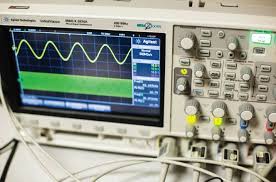
Have you ever wondered how your voice magically travels through your headphones during a call, or how that catchy tune gets recorded on your phone? The secret weapon behind this audio alchemy is the microphone! But have you ever stopped to think about how exactly a microphone detects sound?
Microphones are fascinating little devices that transform sound waves, which are essentially vibrations in the air, into electrical signals. These electrical signals can then be transmitted, amplified, and even stored for later playback. Pretty cool, right?
Why Choose Microphones?
Microphones are everywhere! From your phone and laptop to concert halls and recording studios, they play a vital role in capturing and transmitting sound. Here’s why microphones are such a popular choice for audio applications:
Versatility: Microphones come in all shapes and sizes, each tailored for specific uses. Whether you need to capture a whisper-soft voice or the booming roar of a rock concert, there’s a microphone perfect for the job.
Simplicity: Microphones are relatively easy to use. Just plug them in (or connect wirelessly) and speak or play your instrument. No complex setup required!
Durability: Modern microphones are built to last. From handheld mics bouncing around on stage to studio mics recording for hours, they can handle a lot of wear and tear.
Affordability: You can find microphones at a variety of price points, from budget-friendly options for everyday use to high-end mics for professional applications.
Different Types of Microphones
Microphones might seem like simple devices, but there’s a surprising amount of variety under the hood. Here are some of the most common types:
Condenser Microphones: These versatile mics are known for their high sensitivity and detailed sound capture. They’re perfect for recording vocals, instruments, and even delicate sounds like nature recordings.
Dynamic Microphones: Rugged and reliable, dynamic mics are workhorses in the audio world. They handle loud volumes well, making them ideal for live performances and capturing drums or electric guitars.
Lavaliere Microphones (Lavalier Mics): These tiny mics clip onto your clothing, making them perfect for hands-free applications like presentations or video recordings.
Headset Microphones: Integrated into headsets, these mics are ideal for video conferencing, online gaming, or situations where you need a free hand while talking.
Putting the Mic to the Test: How Does it Work?
So, how exactly does a microphone transform sound waves into electrical signals? Let’s break it down:
Sound Waves Hit the Diaphragm: When you speak or a sound is produced nearby, the sound waves travel through the air and vibrate the microphone’s diaphragm, a thin membrane inside the mic.
Movement Creates a Current: As the diaphragm vibrates, it moves a small coil of wire within a magnetic field. This movement creates an electrical current that varies in strength depending on the intensity of the sound wave.
The Signal Gets Amplified: The weak electrical current created by the diaphragm’s movement is then amplified by the microphone’s built-in electronics, boosting the signal strength for further use.
Now, you might be wondering how well your microphone is capturing sound. Here’s where a Microphone Tester comes in!
Microphone Testers: These handy online tools allow you to quickly check if your microphone is working properly and even give you a basic idea of its sound quality. By speaking into your microphone and watching the visual feedback on the tester’s screen, you can see if the mic is picking up sound and adjust settings if necessary. You can use this online Microphone Tester to troubleshoot any microphone issues before you begin recording.
The Benefits of Using a Microphone
Microphones have a plethora of benefits that extend far beyond capturing your voice for a phone call:
Communication: Microphones are essential for clear communication in various settings, from video conferencing and online learning to presentations and public speaking.
Entertainment: Microphones power the world of entertainment, from capturing live music performances to recording podcasts and audiobooks.
Content Creation: From capturing high-quality audio for your YouTube videos to recording voiceovers for presentations, microphones are crucial tools for content creators.
Education: Microphones are used in classrooms for activities like recording lectures and student presentations.
Conclusion
Microphones are truly remarkable devices that have revolutionized how we capture, transmit, and experience sound. From the simplest phone call to the most complex recording session, microphones are the unsung heroes that bridge the gap between the physical world of sound waves and the digital realm of electrical signals.
So the next time you use your microphone, take a moment to appreciate this ingenious technology that allows you to share your voice with the world






